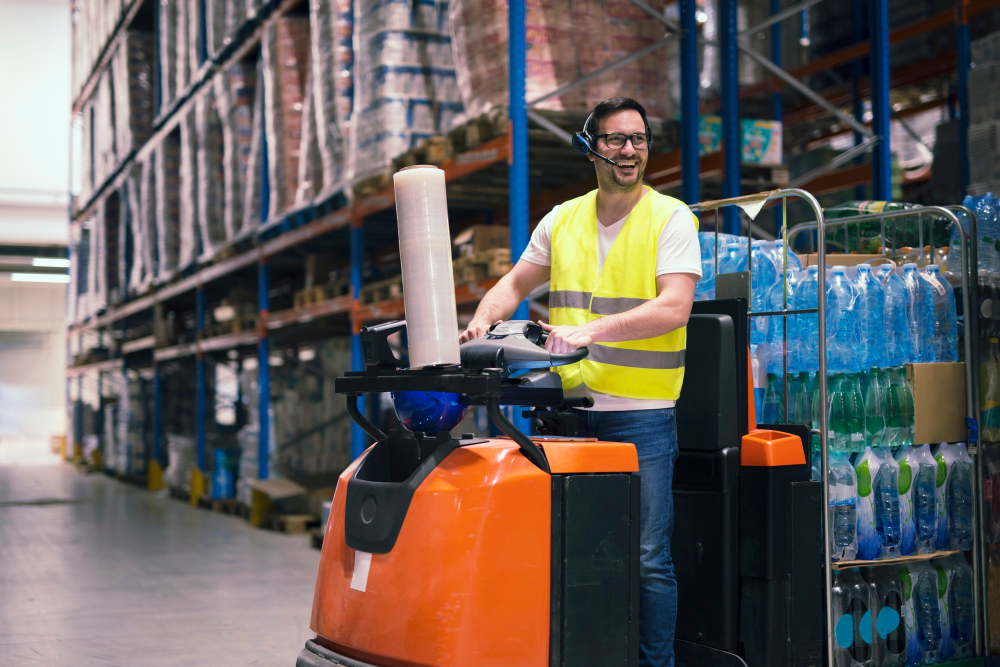In today's fast-paced industrial world, focus on efficiency and productivity has become important. Electric stackers have become a central material handling unit for any workplace. The versatile range has been proved very popular in warehouses, distribution centers, and manufacturing plants where lifting, transporting, and stacking of loads is involved. With electric stackers being the favored choice of many businesses aimed at streamlining operations and maintaining safety in place, advantages over their manual and gas-powered counterparts make them an ideal equipment for daily use.
What are Electric Stackers?
Electric stackers are battery-powered tools used for handling and stacking heavy loads of pallets, crates, and so forth. They also come in a diverse range of configurations. Their primary purpose is to provide easier movement of goods within limited spaces. Electric stackers can, at times, reach incredible heights in order to stack products on racking systems or lift loads directly on to transportation vehicles.
Generic Characteristics and Types of Electric Stackers
Electric stackers can lift high loads with low labor. The motorized mechanism enables smooth easy movement and better control of loads than hydraulic stackers from the manual mechanisms.
There are several types of electric stackers in the marketplace. They are made to serve particular needs according to their type.
Walk-behind electric stackers or similar - walks behind the equipment with a remote control handle to maneuver; commonly used in smaller enclosed warehouse areas because the equipment is smaller and allows for easy operation.
Ride-on Electric Stackers: In such ones, the operator can stand on the machine and drive it. Therefore, they are often used in larger warehouses to offer greater speed and efficiency. Ride-on models are used in facilities where goods need to be transported for longer distances.
Counterbalance Electric Stackers: The counterbalance electric stackers have a counterweight at the back to balance what is being lifted at the top. They are therefore useful for exceptionally heavy loads.
Straddle electric stackers are designed with spread wide apart legs that straddle the pallet. This makes them stable and safe while handling heavy or unevenly distributed loads.
Benefits of Electric Stackers
1. Improved Efficiency
Electric stackers are built to maximize productivity: they allow easy handling of materials without investing in time; and movement of heavy loads almost with minimal human effort maximizes the shorter time taken for each task. They are also relatively light and easy to maneuver, hence suitable for use inside narrow aisles common in warehouses.
2. Productivity of the Operator
Manual handling of materials is very strenuous, and there is a tendency to lead to operator tiredness and higher chances of probable accidents. Electric stackers reduce physical efforts as compared to the above cases and allow operators to work longer periods without straining themselves. This also goes a long way to increase the general workforce efficiency while shortening downtime caused by fatigue-related accidents.
3. Higher Safety
Electric stackers have several features that provide safety. These features include load limit indicators, emergency stop buttons, and an automatic braking system. All these help prevent accidents that could be caused by the operator and damage the equipment around them. On the other hand, electric stackers are quite stable and easy to control and, therefore, are less likely to overturn when raising heavy loads compared to manual stackers.
4. Environmental Friendliness
As the electric stackers are battery operated, they have no exhaust gases that are perceived to be harmful as those emitted by their gas-based counterparts. This makes them environmentally friendly especially when working indoors, thus there would be an improved air quality around the area. The electric stacker tends to make less noise as it operates hence making it quieter in the workplace and reducing noise pollution.
5. Lower Operating Costs
Although initial investment for electric stackers may be higher than manual ones, their long-term savings make them a feasible option. The motors of electric stackers consume less energy; thus, maintenance on the same is lesser and requires less energy altogether. In addition to these, reduction in workers' strain may also mean fewer injuries and less insurance and medical costs.
Use of Electric Stackers
Electric stackers are used in diverse industries, primarily for warehouses and logistics. They are perfect for materials to be loaded and unloaded, transported from storage to the production floor, or rearranged in racking systems. Companies handling fragile or expensive products typically use electric stackers for accurate operations to reduce damage when moving them.
Conclusion
With electric stackers, the game in material handling has really changed as these products uniquely offer efficiency and safety with a panache of environmental friendliness. As efficiency and cost-effectiveness are the crux of any business venture in current times, electric stackers would probably increasingly find their takers as advanced designs and smart features contribute to new waves of improvements in material handling in modern warehouses.





Comments